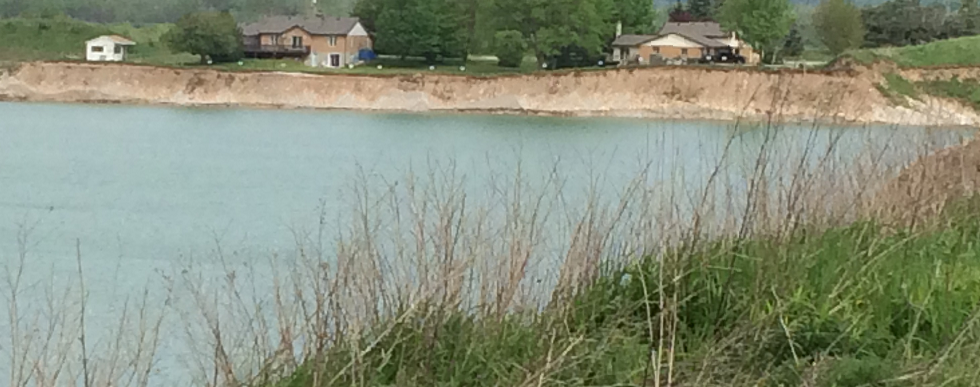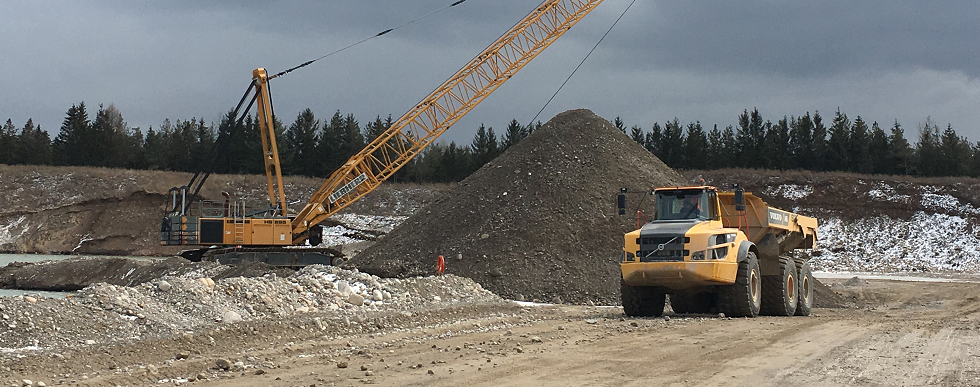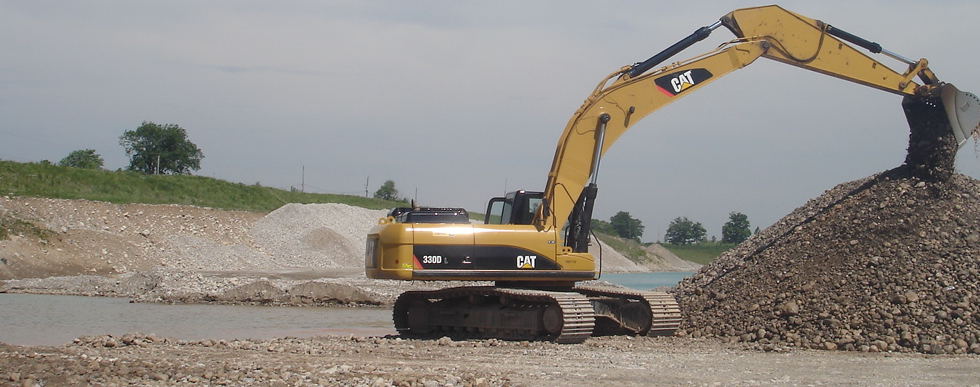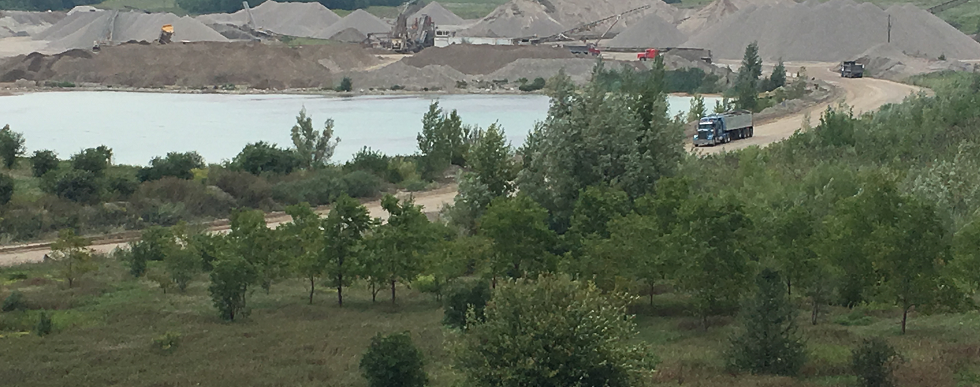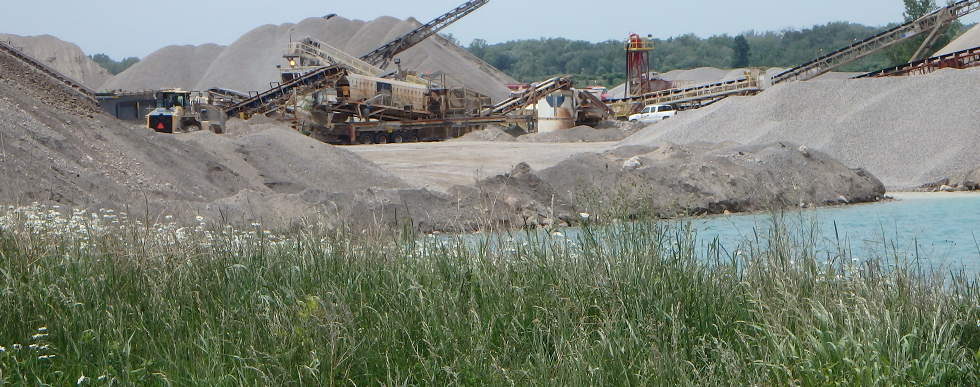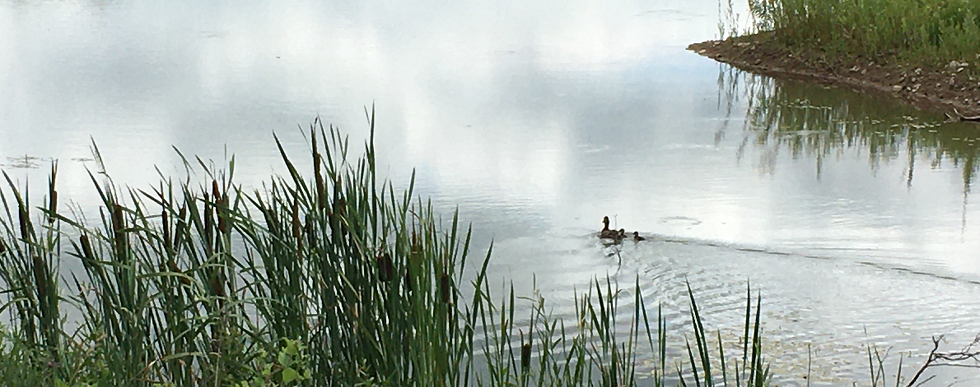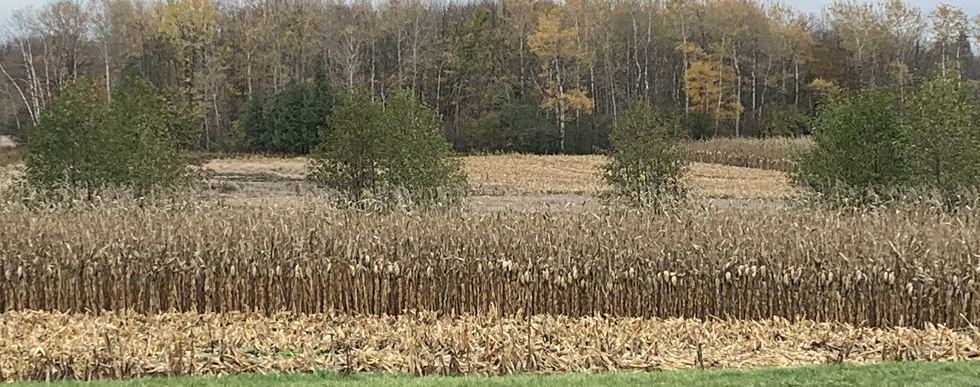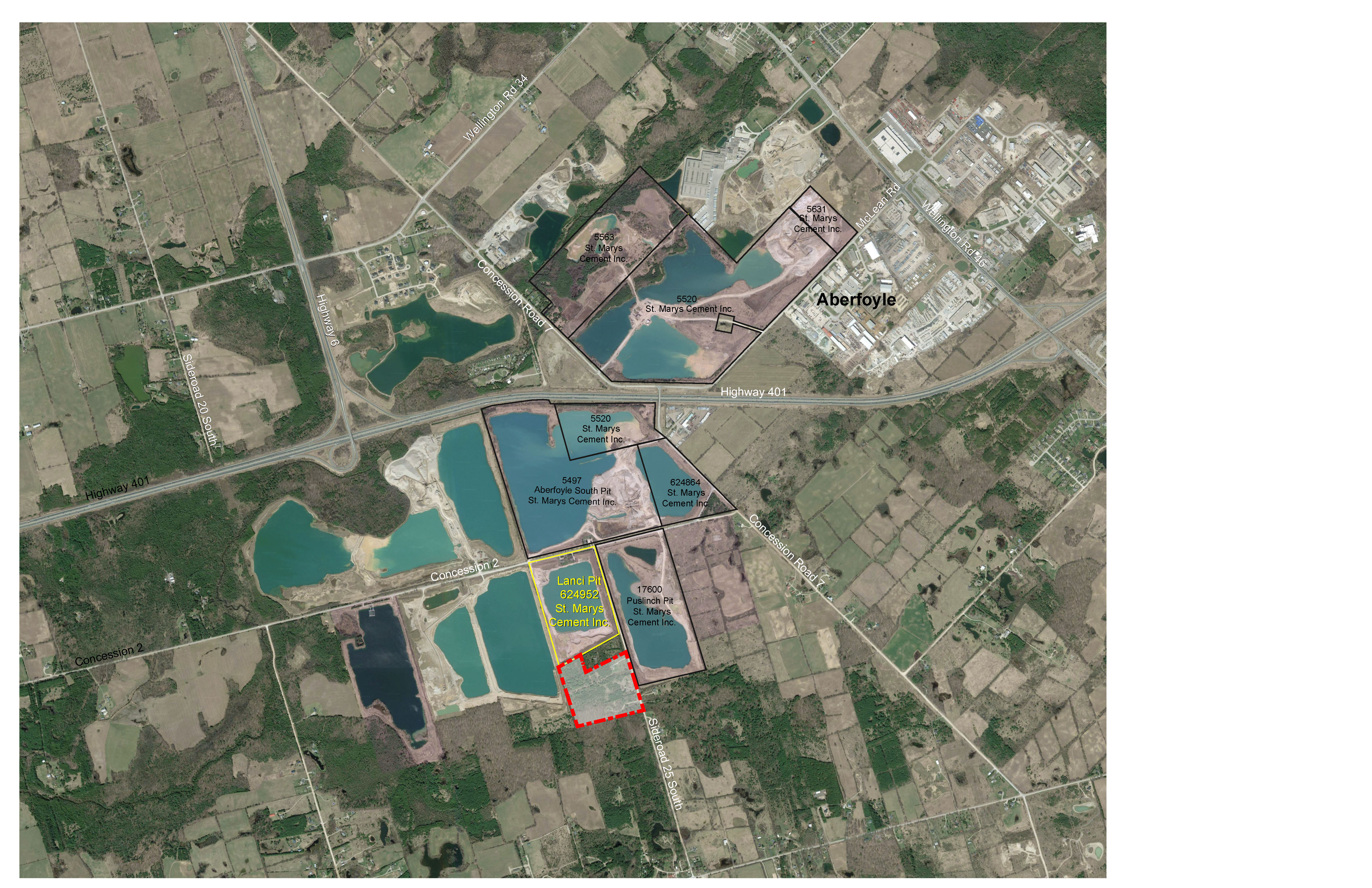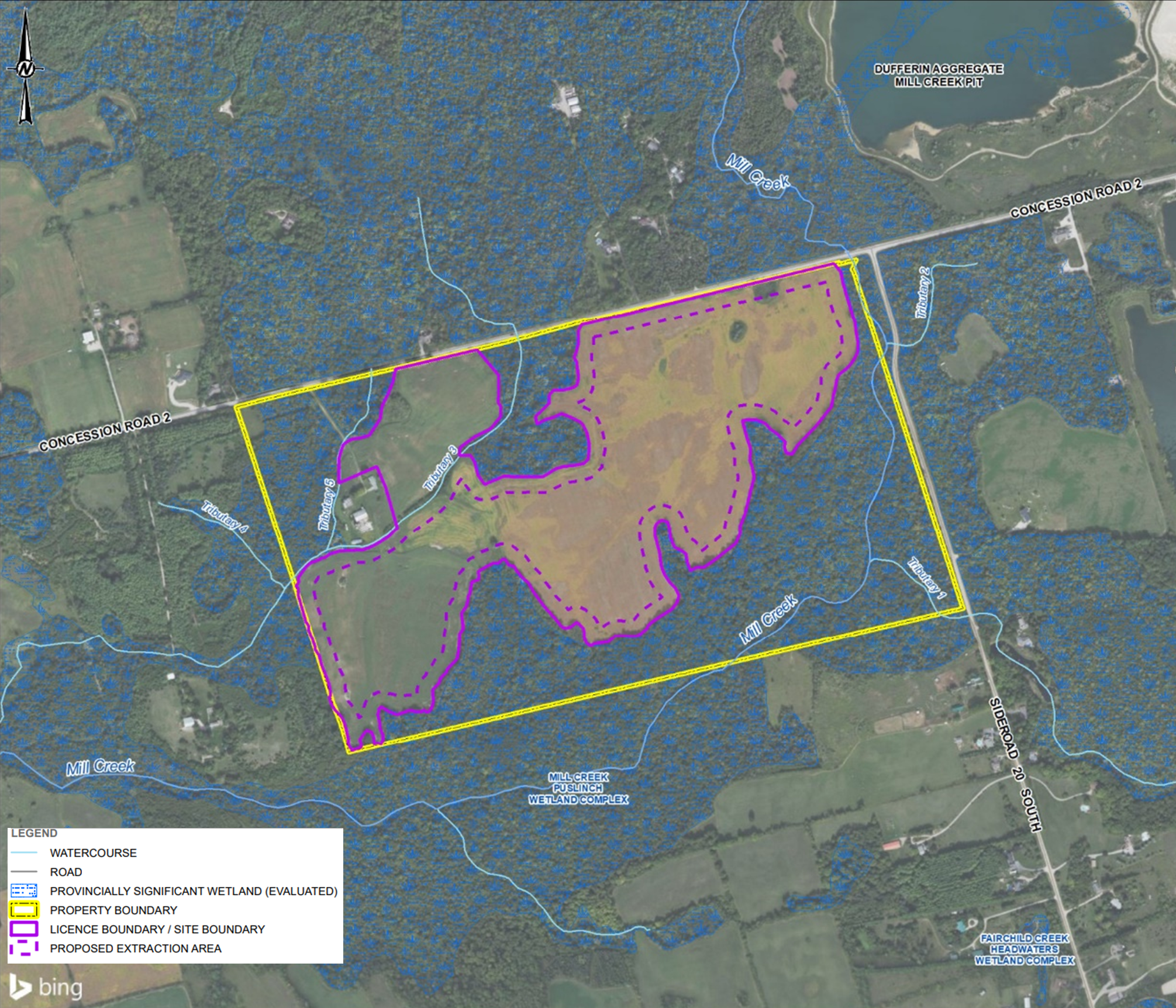Project Summary:
CBM Aggregates, a division of St Marys Cement Inc. (Canada) has submitted an application for a new Category 1, Class “A” licence (Pit Below Water) under the Aggregate Resources Act (ARA) on Part of Lot 25, Concession 1, Township of Puslinch, Wellington County, to the Ministry of Natural Resources and Forestry. The pit will be an expansion of the existing Lanci Pit. Technical studies, accompanying the application include a Hydrogeological Level 1 and Level 2 assessment, a Natural Environment Level 1 and Level 2 assessment, a Stage 1 and Stage 2 Archaeological assessment, and a Noise Impact Assessment.
The proposed pit expansion would be located directly south of the Lanci Pit and will have a proposed licensed area of 14.8 hectares and extraction area of 10.1 hectares. Extraction would occur both above and below the groundwater table, similar to our current operation.
This site contains approximately 3 to 4 million tonnes of high quality sand and gravel resources. The area is recognized in Provincial geological mapping as having some of the highest quality sand and gravel in Wellington County, and provincial and county policies protect these significant resources.
Just like our existing Lanci Pit, processing will not take place on site but rather the aggregate will be extracted and processed at our Aberfoyle South Pit, located between Highway 401 and Concession 2. This plant produces high quality materials in a close to market location including sand and gravel meeting concrete and asphalt specifications, crushed stone, granular and sand products.
There will be no increase in the annual tonnage shipped from this site. Existing haul routes will continue to be used and there will be no truck traffic on Sideroad 25. The hours of operation will be the same as the existing pit (7 am to 7 pm).
Please click here for a summary presentation of the Lanci Pit Expansion project. (22.10 MB)Technical Report Summaries and Technical Report Downloads
The following provides a summary of each study that was completed and a link for you to be able to download the associated report if of interest.
Planning Report
A Planning Report was prepared to review and assess the proposed pit relative to provincial, Wellington County (the County) and Township of Puslinch (the Township) land use planning policies and regulations. The Planning Report also includes a Summary Statement as required by the Aggregate Resources Act which outlines planning and land use considerations, agricultural classification of the Site, the quality and quantity of aggregate resources, projected truck traffic, and the proposed progressive and final rehabilitation plans.
The Site is designated Secondary Agricultural and Greenlands in the County’s Official Plan and is located within the County’s Mineral Aggregate Resource Overlay which are areas of high potential for aggregate extraction. To permit extraction on the Site, applications to amend the County’s Official Plan and Township Zoning By-law have been submitted.
The Planning Report concluded that the proposed pit represents the wise use and management of significant aggregate resources in a close to market location and is in the public interest in consideration of the economic, social and environmental factors that apply to this application. The proposal is consistent with the Provincial Policy Statement, and conforms to the Growth Plan and the County’s Official Plan.
Download: CBM Lanci Pit Expansion Planning Report - April 2020 (16.90 MB)
Site Plans
As required by the Aggregate Resources Act, a site plan has been prepared which identifies the existing features on and adjacent to the Site, the operational requirements and conditions for the pit, and how the Site will be rehabilitated.
The Revised Site Plan included in the link below identifies changes made to the site plan in response to public and agency comments on this application. The changes are identified in red-line.
Download: Lanci Pit Expansion - Revised Site Plan - Aug 2022 (5.82 MB)
Natural Environment Level 1 and 2 Assessment
The purpose of the natural environment study is to assess potential environmental impacts of the proposed aggregate extraction on the site with respect to the environmental features and functions in the study area (the site and adjacent lands), the potential effects on the natural environment, and the rehabilitation potential of the site. The assessment was undertaken for potential ecological impacts under the ARA Provincial Standards, the Provincial Policy Statement, Growth Plan for the Greater Golden Horseshoe, policies of the County of Wellington, as well as other relevant legislation, including the Migratory Bird Convention Act (MBCA) and the Endangered Species Act (ESA). The study area includes the site and surrounding 120 m boundary as defined in the Aggregate Resources of Ontario Provincial Standards, Sections 2.2.3 and 2.2.4.
The investigation of existing conditions in the study area included a background information search and literature review to gather data about the local area and provide context for the evaluation of the natural features. An assessment was conducted to determine which species at risk (SAR) had potential habitat in the study area. The habitats and communities on the site were characterized through field surveys. The surveys were conducted from May to July 2017 and involved area searches, breeding bird surveys, general wildlife surveys, a bat habitat assessment, bat active monitoring surveys, bat acoustic surveys (stationary detectors), ecological land classification and botanical inventory. The boundary of the significant woodland was also delineated and staked in the field.
Eastern small-footed myotis, designated Endangered under the ESA was detected on the Site. Consultation with the Ministry of Environment, Conservation and Parks will be completed to identify any required approvals, or additional mitigation. Based on the assessment, it is expected that there will be no negative impacts to the significant natural features and functions in the study area with the implementation of mitigation measures and an ecologically based rehabilitation plan that will enhance the natural heritage system have been developed. The recommendations include implementation of sediment and erosion control measures and general best management practices, avoidance of soil compaction adjacent to the significant woodland.
Download: Natural Environment Report - April 2020 (6.00 MB)
Hydrogeological Level 1 and 2 Assessment (including Surface Water)
The purpose of the Hydrogeological Level 1 and 2 Assessment is to characterize the existing hydrogeological and hydrological conditions in the vicinity of the site and how they relate to the surrounding natural environment, and to assess potential impacts, if any, that the proposed below-water extraction would have on surface water and groundwater in the area. The assessment involved establishing baseline (current) surface water and groundwater conditions and completing an impact assessment considering proposed operational and rehabilitated site conditions. The completed tasks include a review of available and relevant historic data, a field data collection program, a survey of local groundwater users, and an assessment of the potential impact of the proposed below-water extraction on the surrounding groundwater and surface water receptors, including any creeks, streams, and nearby groundwater wells.
The proposed changes under operational and rehabilitated conditions are anticipated to result in minor groundwater level changes and increases to average annual surplus over the site footprint. The assessment concluded that there are no expected adverse impacts to baseflow or available groundwater quantity at nearby private groundwater wells, and that there are not expected to be any adverse impacts to groundwater quality or temperature at nearby groundwater wells or nearby aquatic habitat from either operational or rehabilitated site conditions. The assessment recommends that CBM’s Best Management Practices be followed and that groundwater monitoring continues throughout the operational period.
Download: Hydrogeological Assessment- April 2020 (28.00 MB)
Noise Impact Assessment
Golder completed a Noise Impact Assessment for the site. Golder established sound level limits according to MECP noise guidelines and compared the predicted noise levels of the Project at the identified Points of Reception (PORs) in the area of the site . The results indicated that, after the implementation of identified noise controls or equivalent measures, the noise levels predicted at the off-site PORs are expected to be at or below the applicable noise limits. Based on the results of the assessment, the site will operate in compliance with Ministry of Environment, Conservation and Parks and Ministry of Natural Resources and Forestry noise guidelines for all PORs.
Download: Noise Impact Assessment - April 2020 (13.20 MB)
Stage 1 and Stage 2 Archaeological Assessment
A Stage 1 archaeological assessment was completed for the site and adjacent lands (study area) site. The Stage 1 assessment compiled all available information about the known and potential archaeological resources within the study area and provided direction for the protection, management and/or recovery of these resources, consistent with the Ministry of Heritage, Sport, Tourism, and Culture Industries guidelines. The Stage 1 assessment found potential for archaeological sites for pre-contact and historic Indigenous and Euro-Canadian archaeological resources to exist on the site and recommended further Stage 2 field surveys to further assess archaeological potential.
The objectives of the Stage 2 archaeological assessment were to provide an overview of archaeological resources on the property and to determine whether any of the resources might be artifacts and archaeological sites with cultural heritage value or interest and to provide direction for the protection, management and/or recovery of these resources. Areas on the site recommended for Stage 2 assessment were surveyed by means of shovel test pitting completed between October 23 and October 27, 2017. The Stage 2 survey involved participation by archaeological field liaisons from Mississauga of New Credit First Nation. The Stage 2 archaeological assessment resulted in the identification of zero artifacts. No further archaeological assessment is recommended for the site.
Download: Rep Stage 1-2 Arch Assess - November 02, 2020 (8.60 MB)
Download: Entered Into Register Archaeological Report for P340-0061 2017 (0.05 MB)
County of Wellington Planning Report
Download: County Recommendation Report July 2022 (9.52 MB)
May 2024 Virtual Public Information Session
CBM hosted a virtual public information session on May 8, 2024 from 6:00 to 8:00 p.m. to provide information to the public and answer questions related to the Aggregate Resources Act application for the Aberfoyle South Pit Expansion.
CBM would like to thank the neighbours and members of the Puslinch community that attended the virtual information session for your participation and for your questions and comments. The intent of the meeting was to provide an overview of the licence application and to answer your questions about the proposed project. We hope that we answered any questions that you may have at this stage and we look forward to continued dialogue with you as the licence application review process progresses.
A copy of the presentation provided at the meeting can be found at the link
The recording of the presentation can be watched below.
We welcome comments or questions you may have on the proposed project at any time and are committed to participating in constructive dialogue. If you would like to reach out to CBM, please contact us by phone or email:
Lands Manager – Western Region
Stephen.May@vcimentos.com
647-637-6707
Project Summary:
CBM Aggregates, a division of St Marys Cement Inc. (Canada), has submitted an application for a new Class “A” licence (Pit Below Water) under the Aggregate Resources Act (ARA) on 6947 Concession Road 2, Township of Puslinch, Wellington County (the site) and an application under the Planning Act with the County of Wellington and the Township of Puslinch. The pit will be in close proximity to CBM’s Aberfoyle operations and will be an expansion of the Aberfoyle South Pit.
CBM initiated technical studies in 2018 to further evaluate the area, determine feasibility of a future application, and to assess potential effects of extraction. These studies, which include groundwater, surface water, natural environment, archaeology, and noise, have now been completed and have been included as part of the application. CBM has also been engaging about this project with local and provincial governmental representatives and with Indigenous communities for a number of years.
The proposed extraction area is approximately 27.5 hectares (ha) in size. The maximum depth of extraction is expected to be approximately 20-25 metres (m) below the current ground surface to a lowest elevation of 285 metres above sea level (masl). Both above water table and below water table aggregate extraction will be completed at the pit. The raw aggregate will be temporarily stockpiled on-site and will then be processed at the nearby CBM Aberfoyle South Pit operation.
The proposed pit contains approximately 5.5 million tonnes of high-quality sand and gravel resources. CBM projects at this time that aggregate extraction will take place on the Aberfoyle South Expansion over a period of approximately 6 to 10 years, with a maximum annual aggregate extraction rate of 1 million tonnes per year. Site operations will not involve any pumping or active dewatering and there will be no direct off-site discharge of water to any watercourse or wetland. The proposed pit operations will be limited to the daytime (7 am to 7 pm) period. Shipping hours will be restricted to 7 am to 6 pm on weekdays and 8 am to 4 pm on Saturdays.
The pit will be accessed via a new entrance located at the east end of the site. Trucks will ship extracted aggregate from the site along Concession 2 to the existing processing plant at the Aberfoyle South Pit, which is approximately 2 km to the east. Trucks will not be permitted to travel west on Concession 2 or use Sideroad 20.
No extraction or disturbance is proposed in any portion of the adjacent Mill Creek Provincially Significant Wetland (PSW) and extraction will be setback a minimum of 30m from this feature. Potential impacts of the proposed pit on the PSW, Mill Creek and other significant natural features have been thoroughly examined through the technical studies undertaken with the application.
The removal of aggregate resources from below the water table will result in the creation of a lake that will be approximately 26 ha in size. Approximately 0.3 ha of new wetland habitat will be created in setbacks adjacent to the Mill Creek PSW. In addition, approximately 6.7 ha of new forest habitat will be created in setback areas. As required by the Aggregate Resources Act, rehabilitation must occur progressively as extraction proceeds through the site.
Technical Report Summaries and Technical Report Downloads
The following technical studies and documentation were included as part of the ARA and Planning Act applications:
- Planning Report
- Site Plans
- Natural Environment Report (NER)
- Water Level 1 and Level 2 Assessment
- Maximum Predicted Water Table Report
- Noise Impact Assessment
- Stage 1, 2 & 3 Archaeological Assessments
- Agricultural Considerations Review
- Transportation Impact Study
- Aggregate Resource Evaluation
- Best Management Practices Plan for the Control of Fugitive Dust
The following provides a summary of the technical studies that were completed and a link to download the associated document if of interest.
Planning Report
A Planning Report was prepared to review and assess the proposed pit relative to provincial, Wellington County and Township of Puslinch land use planning policies and regulations. The Planning Report also includes a Summary Statement as required by the Aggregate Resources Act which outlines planning and land use considerations, agricultural classification of the site, source water protection considerations, the quality and quantity of aggregate resources, projected truck traffic, and the proposed progressive and final rehabilitation plans.
The site is designated Core Greenlands and Greenlands in the County’s Official Plan. The site is not located within the County’s Mineral Aggregate Resource Overlay (which are areas of high potential for aggregate extraction), but they contain high quality aggregate resources based on site-specific resource testing. The lands are zoned Natural Environment and Agricultural within the Township’s Environmental Protection Overlay. To permit extraction on the site, applications to amend the County’s Official Plan and Township Zoning By-law have been submitted. The Planning Report concluded that the proposed pit represents the wise use and management of provincially significant aggregate resources. The proposal is consistent with the Provincial Policy Statement, and conforms to the Growth Plan and the County’s Official Plan.
Download: Planning Report & ARA Summary Statement November 2023 (12.168 MB)
Site Plan
As required by the Aggregate Resources Act, a site plan has been prepared which identifies the existing features on and adjacent to the site, the operational requirements and conditions for the pit, and how the site will be progressively rehabilitated.
Download: ARA Site Plans November 2023 (7.484 MB)
Natural Environment Report
The purpose of the natural environment study is to assess potential environmental impacts of the proposed aggregate extraction on the site with respect to the environmental features and functions in the study area, the potential effects on the natural environment, and the rehabilitation potential of the site. The assessment was undertaken for potential ecological impacts under the ARA Provincial Standards, the Provincial Policy Statement, Growth Plan for the Greater Golden Horseshoe, policies of the County of Wellington, as well as other relevant legislation, including the Fisheries Act, the Migratory Bird Convention Act (MBCA) and the Endangered Species Act (ESA). The study area includes the site and surrounding 120 m boundary as defined in the Aggregate Resources of Ontario Provincial Standards, Section 2.2.
The investigation of existing conditions in the study area included a background information search and literature review to gather data about the local area and provide context for the evaluation of the natural features. An assessment was conducted to determine which species at risk (SAR) had potential habitat in the study area. The habitats and communities on the site were characterized through field surveys. The surveys were conducted from April to August 2018, in October 2021, and from March to September 2023 and involved plant community surveys and botanical inventory, anuran call count surveys, turtle habitat assessment, amphibian egg mass surveys, breeding bird surveys, bat surveys (habitat assessment and acoustic survey), fish and fish habitat surveys and visual encounter surveys. Wetland and woodland delineation was also completed at the site in June 2018 and August 2023, and again with representatives from the Grand River Conservation Authority and the Township of Puslinch on September 2023.
The results of the analysis completed as part of the study, potential temporary impacts to perennial fish habitat within Tributary #3 on site may occur as a result of the proposed extraction. Mitigation and permitting requirements will be confirmed through consultation with Fisheries and Oceans Canada (DFO) through the Request for Review process. No other impacts to the significant natural features and functions in the study area are expected. In addition, an ecologically based rehabilitation plan and preventive mitigation measures that will enhance the natural heritage system have been developed.
Download: Natural Environment Report November 2023 (12.747 MB)
Water Report Level 1 and 2
The purpose of the assessment is to characterize the existing hydrogeological and hydrological conditions in the vicinity of the site and how they relate to the surrounding natural environment, and to assess potential impacts, if any, that the proposed below-water extraction would have on surface water and groundwater in the area and identify need for mitigation. The assessment involved establishing baseline (current) surface water and groundwater conditions and completing an impact assessment considering proposed operational and rehabilitated site conditions. The completed tasks included a review of publicly available and relevant historic data, a field data collection program, and an assessment of the potential impact of the proposed below-water extraction on the surrounding groundwater and surface water receptors, including any creeks, streams, and nearby groundwater wells.
The proposed changes under operational and rehabilitated conditions are anticipated to result in minor, local groundwater level changes and increases to average annual surplus over the site footprint. The assessment concluded that:
- There will be a temporary reduction in localized (mostly within the site) groundwater levels during active aggregate extraction that may impact an overburden groundwater user within the predicted zone of influence of the site. Mitigation measures have been identified to address this impact. No impacts to this groundwater user are predicted during post-rehabilitation.
- With the implementation of applicable mitigation (e.g., CBM’s Best Management Practices, which include spill prevention and response), impacts to groundwater quality are not anticipated.
- Localized (mostly within the site) temporary reductions in baseflow during active aggregate extraction are anticipated. Baseflow changes are anticipated at Tributary #3 and Mill Creek.
- Upon post-rehabilitation, minor baseflow changes are anticipated at Tributary #3 and Mill Creek.
- The Mill Creek-Puslinch Provincially Significant Wetland (PSW) is predicted to have minor changes in groundwater discharge; however, with the implementation of best management practices and mitigation measures, no adverse impacts on the Mill Creek-Puslinch PSW are expected. No other natural receptors are predicted to experience a change in groundwater levels.
- A slight temperature increase is predicted at both Mill Creek and Tributary #3, but this is not expected to have a material impact on surface water receptors.
- No adverse impacts are predicted on the local surface water hydrology of Mill Creek or the Mill Creek-Puslinch PSW. The reduction in runoff from the site is predicted to have minor localized impacts to Tributary #3.
- Groundwater in the overburden and bedrock aquifers is not expected to be adversely impacted from a Source Water Protection perspective relative to current conditions.
- The post rehabilitated scenario represents an opportunity to generate improved water quality as a result of the change in land use from agriculture.
The assessment recommends that a private well survey be completed prior to the initiation of aggregate extraction, that CBM’s Best Management Practices and provincial standards for fuel handling be followed, and that groundwater monitoring be implemented throughout the operational period.
Download: Water Report Level 1&2 November 2023 (37.761 MB)
A maximum predicted water table report was also prepared as required by the ARA, which outlines how the maximum predicted water table was identified relative to the proposed depth of extraction at the pit:
Download: Maximum Predicted Water Table Report November 2023 (8.569 MB)
Noise Impact Assessment
WSP Canada Inc. (WSP) completed a Noise Impact Assessment for the site. WSP established sound level limits according to MECP noise guidelines and compared the predicted noise levels of at the identified representative Points of Reception (PORs) to the established limits. The results indicate that, after the implementation of identified noise controls or equivalent measures, the noise levels predicted at the off-site PORs are expected to be at or below the applicable noise limits. A change in noise levels along the haul route, during peak hauling hours, may be noticeable at times at the POR identified along the haul route, but it is not expected to be a significant change. Based on the results of the assessment, the site will operate in compliance with Ministry of Environment, Conservation and Parks and Ministry of Natural Resources and Forestry noise guidelines for all PORs.
Download: Noise Impact Assessment November 2023 (9.655 MB)
Stage 1 and Stage 2 Archaeological Assessment
A Stage 1 archaeological assessment was completed for the site. The Stage 1 assessment compiled available information about the known and potential archaeological resources within the study area and provided direction for the protection, management and/or recovery of these resources, consistent with the Ministry of Citizenship and Multiculturalism standards and guidelines. The Stage 1 assessment found potential for archaeological sites for pre-contact Indigenous and historical Euro-Canadian archaeological resources to exist within the study area and recommended further Stage 2 field surveys to further assess archaeological potential.
The objectives of the Stage 2 archaeological assessment were to provide an overview of archaeological resources within the study area and to determine whether any of the resources might be artifacts and archaeological sites with cultural heritage value or interest, and to provide direction for the protection, management and/or recovery of these resources. Areas recommended for Stage 2 assessment were surveyed by a combination of pedestrian and test pit surveys completed between June 26 and July 10, 2019. The Stage 2 survey involved participation by archaeological field liaisons from Mississauga of the Credit First Nation and Six Nations of the Grand River.
The Stage 2 archaeological assessment resulted in the identification of 25 locations and findspots with archaeological artifacts: 23 pre-contact Indigenous and two historical Euro-Canadian. Given the findings of the Stage 2 archaeological assessment, Stage 3 archaeological assessment was recommended for the historical Euro-Canadian component found at two of the locations. One of the locations had already been registered as an archaeological site with the MCM under Boden (AiHb-374). Stage 3 archaeological assessment is being completed at these two sites.
In addition, long-term protection an avoidance was recommended for one location related to Indigenous use of the area. This Indigenous location had also already been registered as an archaeological site with the MCM under Boden (AiHb-374). The protected area of this archaeological site is shown on the Site Plan accompanying the ARA licence application. CBM will adhere to the avoidance and protection measures outlined in the report and a licensed archaeologist will be present to conduct scheduled inspections and monitoring at the archeological site during and after construction.
No further archaeological assessment was recommended for the remaining locations or for the findspots identified.
The Stage 1-2 assessment and its findings were accepted by MCM.
Download: Stage 1 and 2 Archaeological Assessment August 2023 (10.103 MB)
Download: ENTERED INTO REGISTER Archaeological Report for P468-0054-2020 P468-0087-2022 (0.079 MB)
Download: Archaeologist CV_HahnRandy
Download: Archaeologist CV_FisherRhiannon
Stage 3 Archaeological Assessments
The Stage 3 archaeological assessments have been completed at the two sites identified in the Stage 2 assessment. The Stage 3 assessments determined that, prior to extraction, Stage 4 archaeological assessments are required. These areas have been identified on the Site Plans accompanying the ARA licence application in accordance with the recommendations of the Stage 1-2 and Stage 3 archaeological assessment reports.
Download: Stage 3 Archaeological Assessment Location 3 June 2023 (6.692 MB)
Download: Stage 3 Archaeological Assessment Location 5 June 2023 (5.653 MB)
Agricultural Considerations Review
A small portion of identified Prime Agricultural Area (PAA) is identified on the west portion of the site and will be removed as part of the proposed pit expansion. Other identified PAA on the subject site is located outside of the limits of extraction and will not be removed. The proposed pit expansion is not anticipated to have negative impacts on the agricultural system in the area, subject to the implementation of recommended mitigation measures.
Download: Agricultural Considerations Review September 2023 (9.789 MB)
Transportation Impact Study
The Transportation Impact Study determined that the pit would generate a total of 28 truck trips during a peak hour (14 in, 14 out) which would travel 2km along Concession 2 from the pit to the Aberfoyle South Pit. The study concluded that nearby intersections are projected to operate with nearly zero delay and highly efficient conditions with the addition of future truck traffic. No operational roadway improvements, such as exclusive turn lanes at the site accesses, would be required to accommodate the projected pit traffic at the study intersections. A comprehensive test of the structural condition of the Mill Creek culvert and Concession 2 roadway was recommended to confirm the overall haul route’s load bearing capacity.
Download: Transportation Impact Study November 2023 (28.453 MB)
Aggregate Resource Evaluation Report
Based on on-site resource testing, it is estimated that there are approximately 5.5 million tonnes of sand and gravel resources available within the proposed extraction area for the Project.
Download: Aggregate Resource Evaluation November 2023 (23.244 MB)
Best Management Practices Plan for the Control of Fugitive Dust
A Best Management Practices Plan (BMPP) has been prepared to manage fugitive dust emissions associated with the Project. The BMPP will be reviewed periodically and updated, if required.
Download: BMPP for Control of Fugitive Dust October 2023 (2.148 MB)
